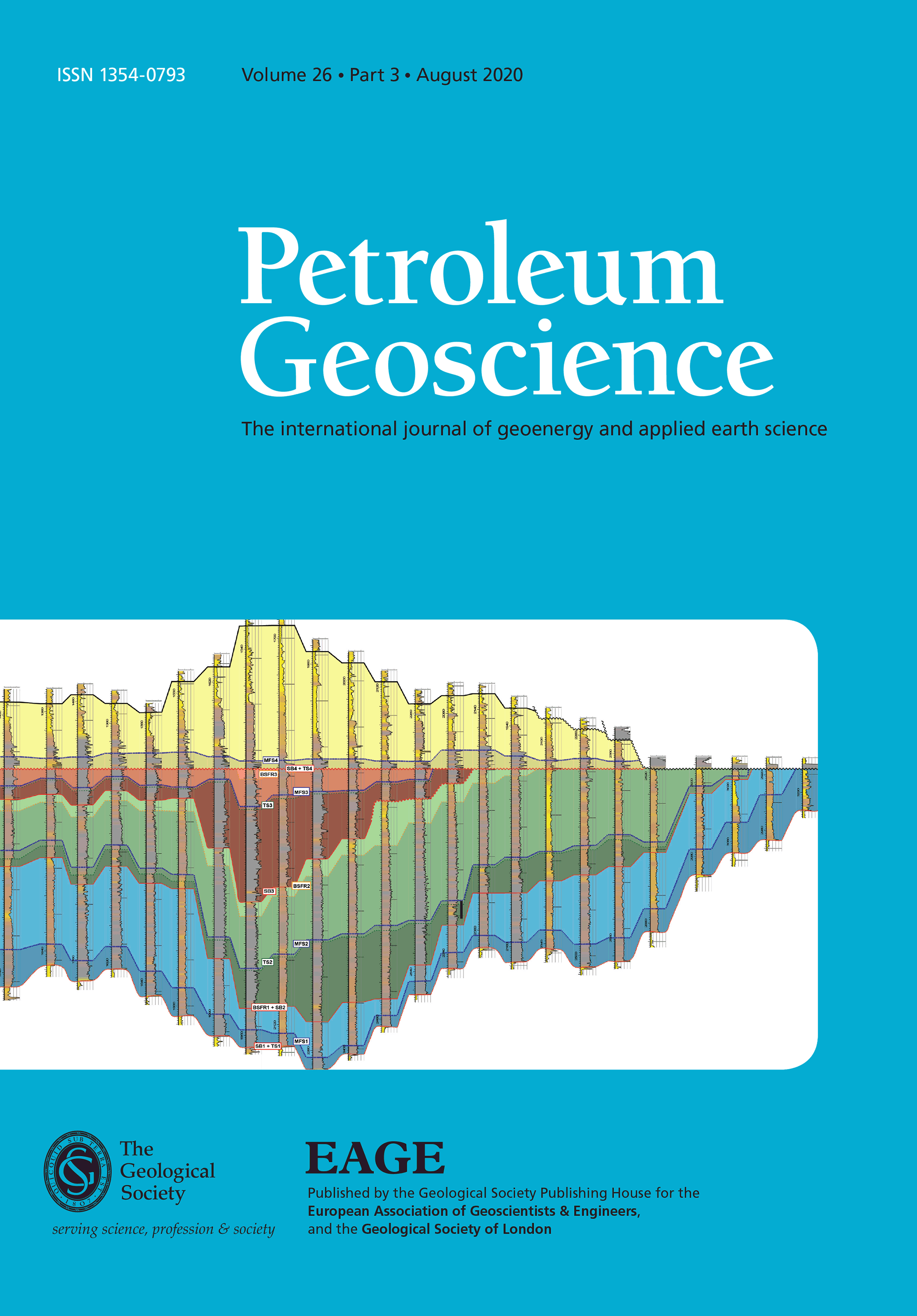
Full text loading...
Rock physics analyses of data from a wildcat well 7117/9-1 drilled in the Senja Ridge area, located in the Norwegian Barents Sea, reveal changes in stiffness within the fine-grained Paleogene Sotbakken Group sediments, caused by the transformation of opal-A to opal-CT, and opal-CT to quartz. These changes manifest as flat spots on 2D seismic profiles. These flat spots were mistaken as hydrocarbon–water contacts, which led to the drilling of well 7117/9-1. Rock physics analyses on this well combined with a second well (7117/9-2) drilled further NW and updip on the Senja Ridge indicate overpressure within the opal-CT-rich zones overlying the opal-CT to quartz transformation zones in the two wells. The absence of opal-A–opal-CT and opal-CT–quartz flat spots on seismic in the second well is attributed to differences in the temperature and timing of uplift. Amplitude v. angle (AVA) modelling indicates both the opal-A–opal-CT and opal-CT–quartz interface points plot on the wet trend, whereas modelled gas–brine, oil–brine and gas–oil contacts fall within quadrant-I. These findings will be useful in understanding the nature of compaction of biogenic silica-rich sediments where flat spots could be misinterpreted as hydrocarbon-related contacts in oil and gas exploration.

Article metrics loading...

Full text loading...
References


Data & Media loading...

